Rail Baltic, one of Europe’s most ambitious railway projects, aims to connect the Baltic countries and central European nations better. With high-speed trains reaching speeds of 249 km/h, this transformative endeavor promises to bring new architecture and efficient travel experiences to the region.
Estonia, Latvia, and Lithuania are three relatively small countries on Europe’s Eastern flank. Western European travelers often connect and comprise them into one extended holiday. Only around 600 kilometers of road are between the southern Baltic capital Vilnius and northern Tallinn. There are two common ways to commute between these capitals: one is via plane, and the other one is via bus. A plane takes about 30 minutes to Riga and one hour to Tallinn from Vilnius. A bus journey takes four hours to Riga and 8 hours to Tallinn – all capitals are conveniently placed around 300 kilometers apart. But more adventurous travelers and backpackers dare another route, that is, taking the train. In this instance, one would need to travel from Vilnius to the Latvian border town of Daugavpils in just under three hours and from there in just under three and a half hours to Riga. From there, another train takes one to the Estonian-Latvian town of Valga in two and a half hours and finally from there in just under three and a half hours to Tallinn.
Of course, being of no central coordination, one must include that not every train departs smoothly again after one’s arrival and plan overnight stays. This hodgepodge of train journeys is – hopefully soon and forever – meant to end: 249km/h high-speed trains, developed by the conglomerate Rail Baltica, might soon carry passengers from Tallinn to Vilnius for the length of one “Gone with the Wind” – movie; and with it comes to a lot of new architecture.
Rail Baltic
Since 1991, after the Soviet Union formally collapsed and countries could build and rebuild themselves and their infrastructure, a major plan has been developed. A connecting railway line between Vilnius and Tallinn connects Tallinn via a railway tunnel to Helsinki in the north and Warsaw to Vilnius via additional rails to the south. Such a railway could connect the Baltic countries better and quicker (for passengers and cargo) to central European countries such as Poland and Germany. Repeatedly, over the last 25 years, the transport ministers of the respective countries have signed agreements and infrastructure consulting firms such as AECOM have conducted feasibility studies. Partly, the new rail has been constructed around Kaunas in Lithuania, for example.
However, nothing else happened. As with every major architectural or infrastructural project worldwide, except for China, construction is postponed repeatedly. Agnis Driksna, chairman of the board and executive director of Rail Baltica, summarises the situation as follows in a Latvian news portal: “Complications in design, a heavy and complicated process of expropriation of land, obstacles in obtaining funding from European Union funds are the main reasons why instead of the predicted year of 2026, it is likely that we will be able to build the new track in its final stages only in 2030.”
What needs to be done?
It sounds naive to ask this question – it is “just a railway” – but this article aims to provide a general overview of the situation. Hence, one needs railway stations, tracks, and trains to build a railway route. To begin with, all three capitals have railway stations. However, all of them were built during the Soviet Union and are neither functional enough nor aesthetic enough for the new and ambitious project. Secondly, building tracks is one thing, and partly, existing tracks can be used, but for other parts, plots of land privately owned, the need to add a second gauge, streets, rivers requiring bridges, countryside houses, or even endangered or protected animal habitats – such as the capercaillie – might be in the way. The current state of construction in different parts along the line can be found here on Rail Baltica’s website.
Please note how Kaunas in Lithuania will be directly connected whereas Vilnius, the capital, will require a transfer – instead of vice versa. Vilnius, unfortunately, lies not in a direct vertical line with Helsinki, Tallinn, and Riga. Notice also how the blue line coming from the West to Warsaw is an existing Intercity line from Berlin.
…and the architecture?
Despite the necessity and convenient travel benefits of the project, one of the most important yet often overlooked questions is that of the station buildings, particularly those planned in the three major cities of Tallinn, Riga, and Vilnius. Looking at Tallinn, the station is planned not at the existing railway station – although there are works of renewal going on too – but at a station nearby the airport and an existing cluster of tech companies called Ülemiste City.
The winning entry – perhaps less surprising to some – is Zaha Hadid Architects in a joint team with Esplan OÜ. Esplan is a local architectural office realizing (rather) large-scale projects in Estonia (and beyond), including public schools, company headquarters and residential buildings. Other than the promise of public space and efforts to be as sustainable as possible, not much is further known about the station design in its details. The station will sit between two large shopping malls, which could, in theory, free the station itself from any unnecessary shops and have therefore potential for more exciting and diverse public space – whether that will be the case is unknown. Zaha Hadid Architects won a few years earlier already a competition in Tallinn for the masterplan of the port.
Moving to Riga, the Danish architectural office PLH Arkitekter from Copenhagen won the design competition. Their station will physically join Riga’s existing railway station. Quoting an ArchDaily article by author Sabrina Santos: “Inspired by the archetypal form of the arch and the Art Nouveau period, the building will feature canopies that resemble arched fern leaves. On the north side of the building, the canopy shape allows for a unique view over the historic city, ideal for travelers entering or leaving the city to create a strong sense of place.” In line with Danish mentality and European climate-saving aspirations, the stations’ infrastructure will also feature new bicycle lanes and green areas.
Lastly, Vilnius. Also here, not long after their success in Tallinn, Zaha Hadid Architects have been chosen for the station design, displaying the city’s eagerness to have ‘a Zaha Hadid’ in their city. Quoting a Dezeen article: “46-meter-wide bridge will span 150 meters across the existing railway tracks and their platforms, 10 meters above ground level”. And further: “As part of the Green Connect project, Zaha Hadid Architects will also remove mismatched kiosks and office spaces that have been constructed in the station over the last decade.” The project includes elevated cycle lanes alongside the building and a timber roof for the bus station that will be placed in front of the station.
Unknown for now is the faith of Kaunas railway station, being also Soviet of design and in need of a freshening up, as a main connector of the Rail Baltic.
“Mismatched Kiosks and Office Spaces” All station designs are somewhat visions or masterplans without details. The decisive criteria here were how they connect to the existing cityscape, how they help to achieve environmental goals, and perhaps their overall design. Interestingly enough, both Riga’s and Vilnius’ new stations will sit alongside the existing older stations and how they precisely connect to these buildings will be very interesting to see.
Nevertheless, all stations cover a massive land area, being highly top-down projects in silver and glass. Whether or not they will work, live up to the expectations and hopes of the public, and be functional in detail remains unknown until finished. As it often goes with such large-scale projects, a conflict of interests might be assumed: the developers want to deliver and impress, the architects building up their portfolio with works that (perhaps) could have been elsewhere, workers and builders want something easy, and residents fear about gentrification, and if not yet, about monstrous construction sides, noise and lost car parking lots. It seems to combine all these interests under one umbrella; Zaha Hadid has designed two enormous and catchy buildings whose arms (in the case of Vilnius: 150 meters) reach far alongside the platforms – similar to how GMP architects once envisioned Berlin central station before running out of money, making local newspapers saying “first-class passengers need umbrellas at the platforms”.
Noteworthy is further how Zaha Hadid stands for a particular design language, which takes urban context not via materials but via forms into context, often aiming at connecting everything to everything else. A more subtle – or perhaps not – approach is Riga central station, which appears smaller, generally more carefully designed, and simply with a rather beautiful touch on top of the necessary. But with all stations, one cannot know for sure their impact and pleasurability of use before finished, and perhaps, in this particular gigantic project, it is more important to get it finished rather than the questions of what kind of public space will be provided or how one can get from the toilets on the second floor to platform 8. The more so considering the long-term plan for the Tallinn-Helsinki tunnel and the planned railway connection to the Baltic’s main airport in Riga – currently, a bus takes passengers from Riga central in a cumbersome bus route through the suburbs to the airport.




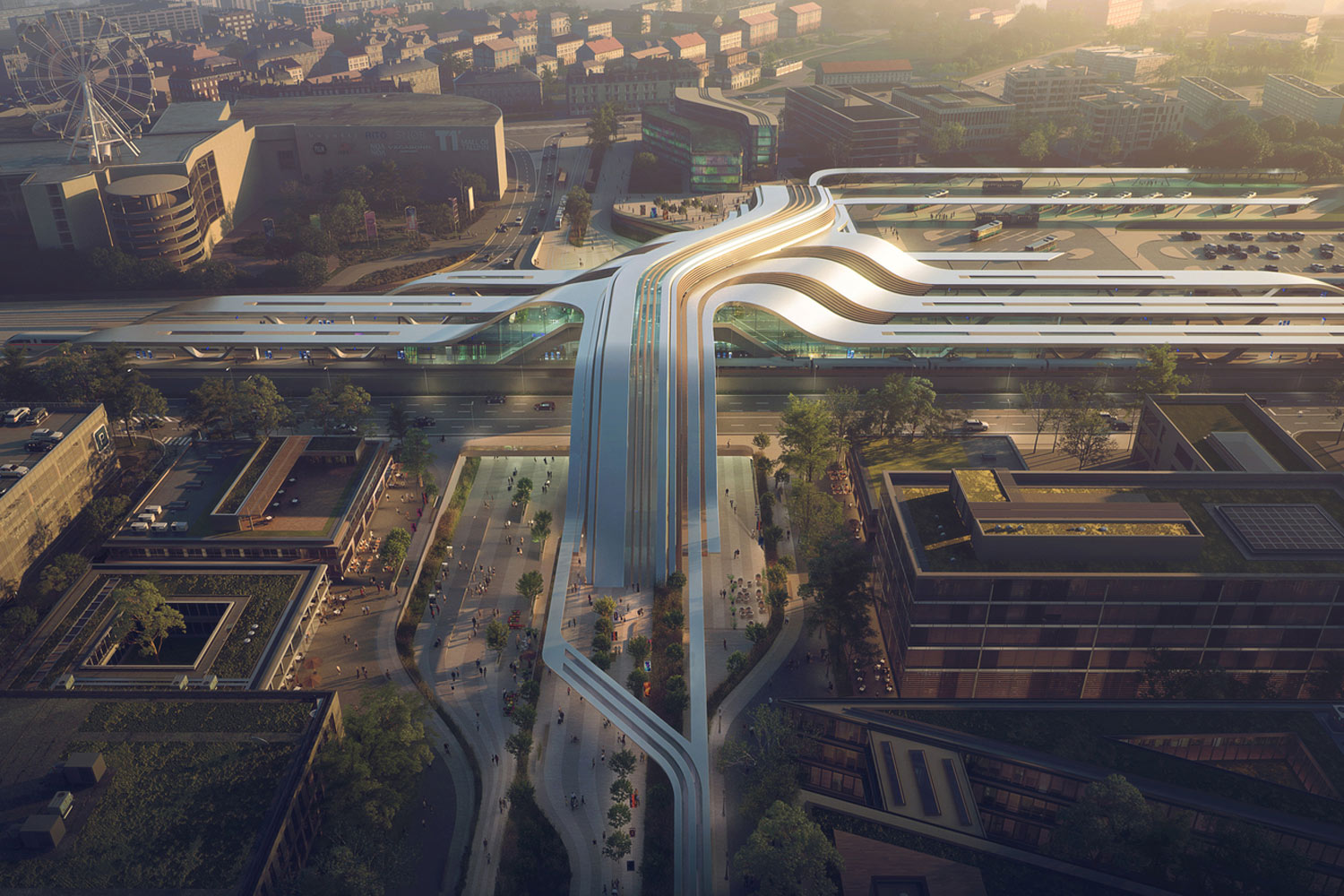

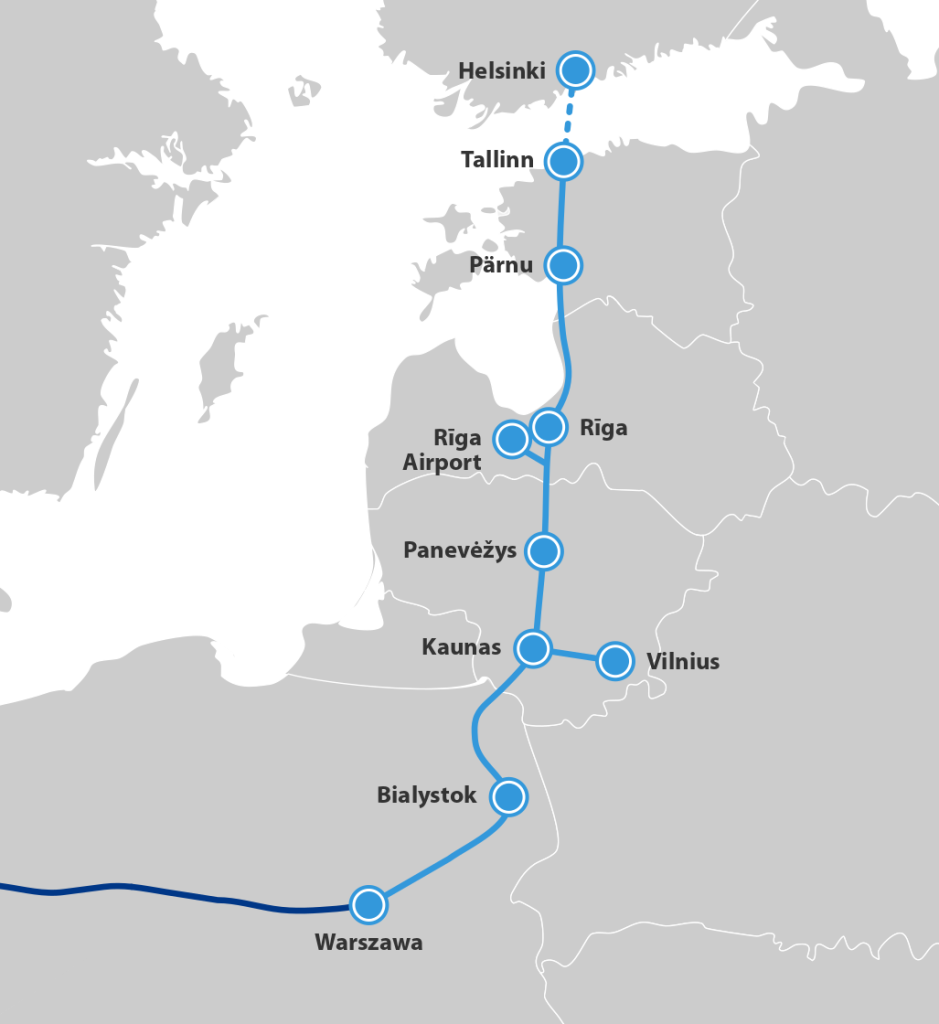
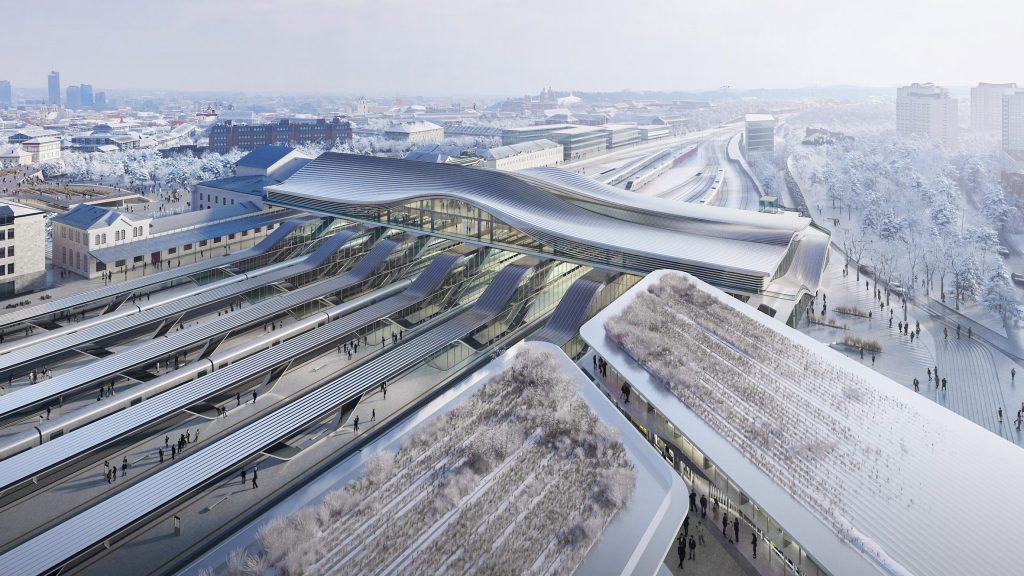
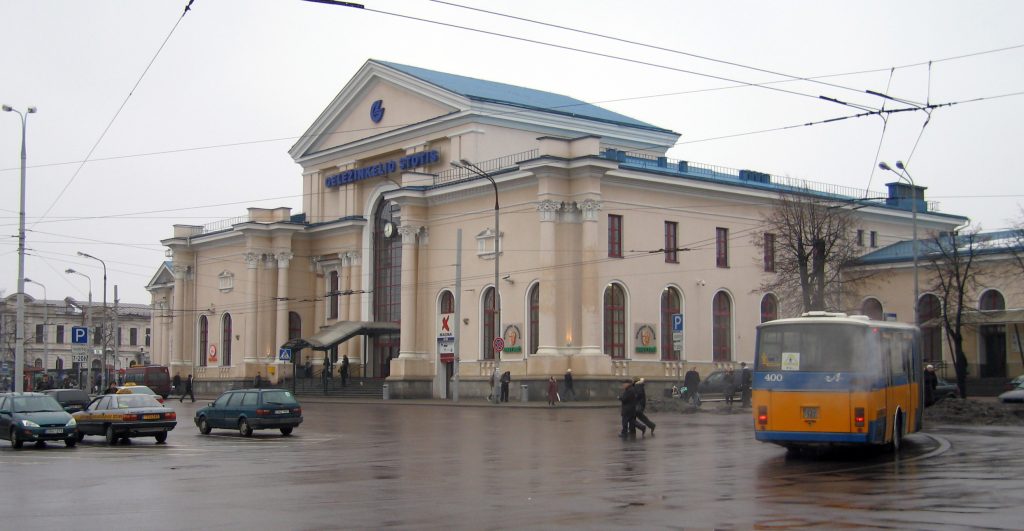
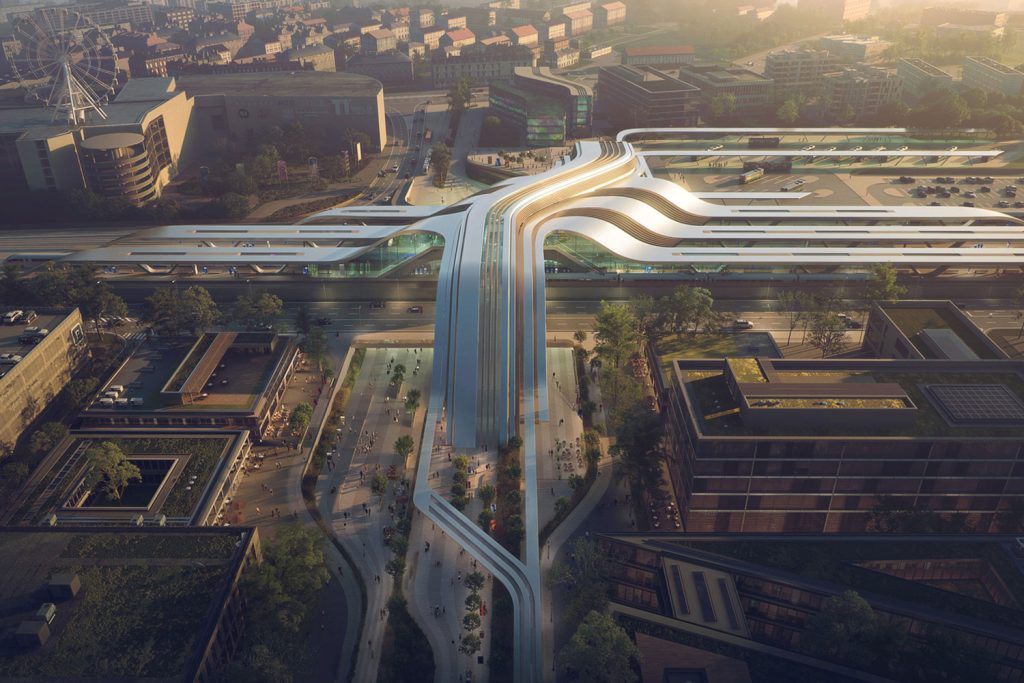














Leave a comment